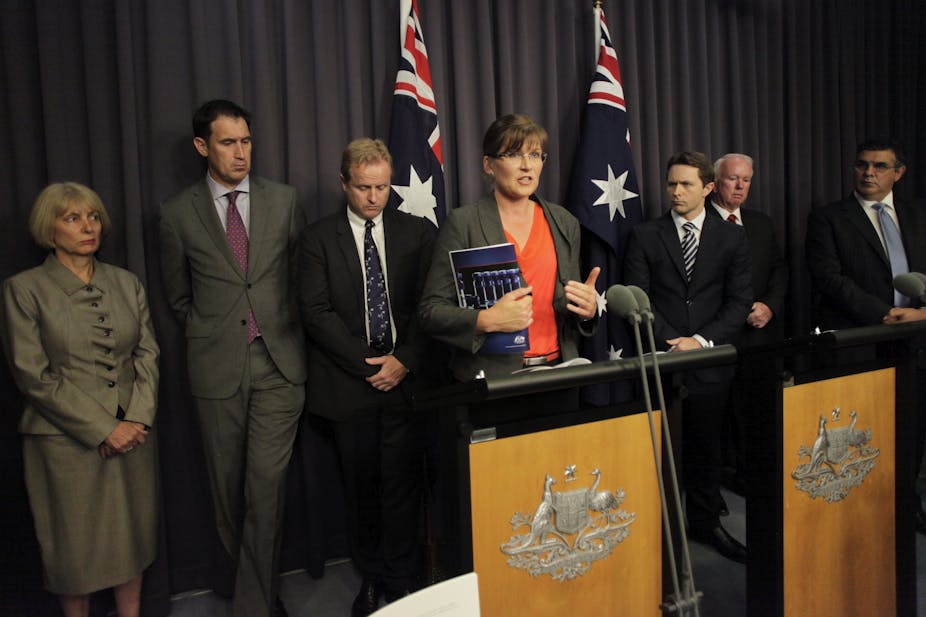The “crisis” in Australian sport in 2013 prompted calls for change to rebuild integrity and public trust. But while beefing up policing and instituting harsher penalties seems to be a natural reaction to the “crisis”, this strategy might miss the mark.
Integrity management is more than a policing matter or mere brand protection. It is ultimately about fostering safe and inclusive sporting environments for all involved, and catering for a plurality of values that include – but are not limited to – the pursuit of sporting excellence.
In response to the crisis, the then-Labor government introduced the Australian Sports Anti-Doping Authority Amendment Bill 2013 to expand ASADA’s policing powers. The former government also established a National Integrity in Sport unit to help control doping and match-fixing. Professional sporting organisations such as the AFL are appointing more “integrity officers”.
Moves are underway to re-instate the authority of medical doctors in high-performance management teams. Australia’s peak body for sport scientists, Exercise and Sport Science Australia, has recognised that the industry requires further regulation.
Problems with current anti-doping strategy
A hard-line anti-doping strategy tends to focus on individual athletes (and not the culture of high performance and doping), threatens sport doctor-patient privilege and drives the problem underground.
Within a medical or workplace safety framework, however, doping is a health and education issue that requires a long-term strategy to minimise harm to athletes. And yet, there is little anti-doping research tackling the question of how proven policies and prevention tools from harm minimisation could be brought to bear on the drugs and doping problem in sport.
Elite sport in Australia is big business. It would be fair to say that the high-performance, “whatever it takes” ethos dominates, and it has filtered down to the community sport level. In this way, it is possible to link doping to the systemic pressure on athletes, support personnel and sporting clubs to consistently surpass peak performance.
These are social, historical and cultural factors of direct relevance to the issue of doping in sport. However, these are not well understood or addressed in current anti-doping policy.
Similarly, media representations of winning and sporting heroes can influence how those at the grassroots understand and experience what sport is about. Australia’s swimming team was vilified by the media (and the public) after the London Olympics. Is the message that Olympians have to apologise for not winning gold medals the one we want to give our kids?
These are key examples of an over-emphasis on winning that needs to be addressed. Let’s remember, too, that sport integrity is more than just about doping and match-fixing. Notwithstanding the efforts of many dedicated and well-meaning parents, coaches and other volunteer officials at the local level, sport can be a hostile place. Violence and intimidation, including “ugly parent syndrome”, can affect players, umpires and spectators.
Sexist, homophobic and racial slurs are still often reduced to “gamesmanship” – mere strategies to unsettle opponents or taunt umpires – rather than recognised as the demeaning, hurtful and discriminatory behaviours that they are.

Cultural change
Changing sport culture from winning to healthy participation, skill development and other values is challenging, but not impossible. Coaches at suburban AFL clubs could, for example, devise learning plans for each young player around skill development and challenge. A full forward could attempt two kicks for goal with their non-dominant leg – even if it meant missing the goal altogether.
There are other ongoing efforts to promote integrity and a range of values in sport. The Australian Sport Commission and the Victorian Equal Opportunity and Human Rights Commission work to provide the community with resources to deal with discrimination and promote inclusive and safe sport.
Organisations like the Australian Drug Foundation’s Good Sports Program work with communities to create sustainable, family-friendly sport clubs that are less reliant on alcohol sales and more capable of redressing the drinking culture that comes to be associated with sport. Further support is needed to extend the reach and improve the uptake and effectiveness of these programs.
While the “policing approach” has the momentum, the key challenge remains the promotion of the broader cultural shift that is needed to fulfil sport’s promise of delivering a variety of social goods.
Such culture change will not be brought on by simply more surveillance and punishment. Instead, it requires more education, leadership and stakeholder ownership across all levels of sport.

